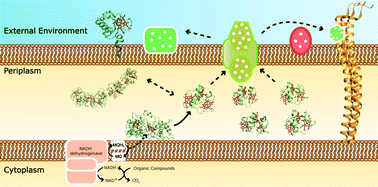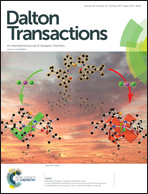Diving into the redox properties of Geobacter sulfurreducens cytochromes: a model for extracellular electron transfer†
Abstract
Geobacter bacteria have a remarkable respiratory versatility that includes the dissimilatory reduction of insoluble metal oxides in natural habitats and electron transfer to electrode surfaces from which electricity can be harvested. In both cases, electrons need to be exported from the cell interior to the exterior via a mechanism designated as extracellular electron transfer (EET). Several c-type cytochromes from G. sulfurreducens (Gs) were identified as key players in this process. Biochemical and biophysical data have been obtained for ten Gs cytochromes, including inner-membrane associated (MacA), periplasmic (PpcA, PpcB, PpcC, PpcD, PpcE and GSU1996) and outer membrane-associated (OmcF, OmcS and OmcZ). The redox properties of these cytochromes have been determined, except for PpcC and GSU1996. In this perspective, the reduction potentials of these two cytochromes were determined by potentiometric redox titrations followed by visible spectroscopy. The data obtained are taken together with those available for other key cytochromes to present a thorough overview of the current knowledge of Gs EET mechanisms and provide a possible rationalization for the existence of several multiheme cytochromes involved in the same respiratory pathways.


 Please wait while we load your content...
Please wait while we load your content...